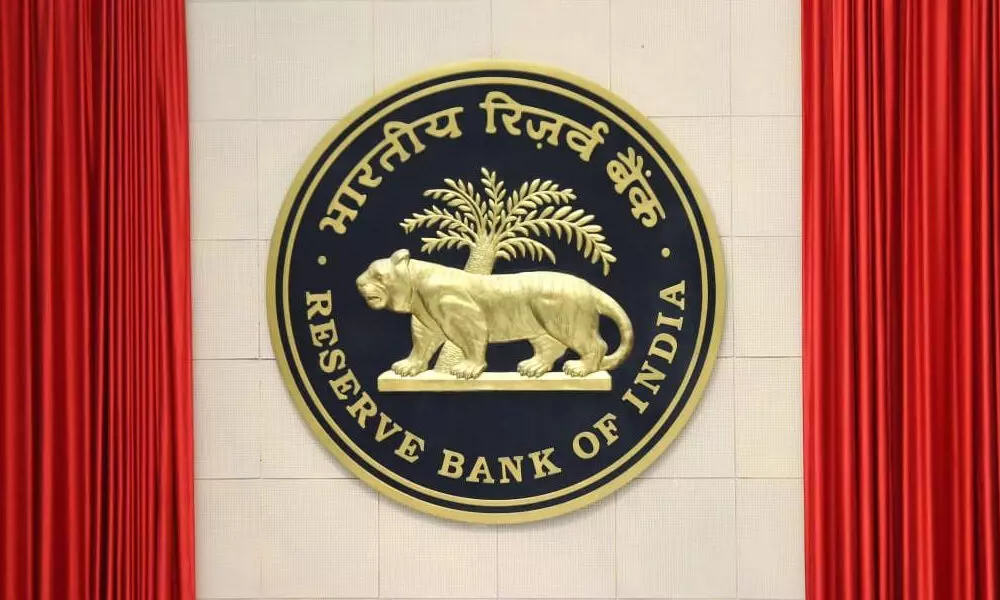RBI likely to retain accommodative stance
Amidst second wave of Covid infections and firming up inflationary pressures, RBI is faced with a critical dilemma of choosing between supporting economic recovery which is still very fragile or tackling inflation before it gets too late
image for illustrative purpose

Growth-inflation see-saw needs a fine balance for yet another year
Mumbai: Even as the first monetary policy committee (MPC) meeting of the current fiscal, which kickstarted on April 5, is set to conclude on April 7, experts are of the view that RBI will maintain its accommodative stance when it reveals the bimonthly review of the key policy rates on Wednesday. To be precise, expectations are ripe for another round of status quo.
While the economy was rising from ashes, the recovery has been pre-maturely precluded by a stronger second wave, resulting in coming back of lockdown restrictions and a consequent dampening of economic activity. One thing is certain, the street talks of rate hikes in H2FY22 will take a backseat and focus will shift back towards monetary support with limited expectations on any further fiscal surprise. Growth-inflation see-saw will need a fine balance for yet another year.
Banking system liquidity stands at upwards of Rs 5 trillion and is likely to be maintained at the current levels for longer, though RBI could continue to evolve the durations. Overall, a status quo policy lies ahead, outlining the persisting weaknesses in the economy, with a continued promise to stay accommodative for as long as is needed, says a study by Edelweiss Wealth Research.
On the growth front, CSO estimates full year GDP to be -8 per cent in FY21. RBI's February projections built in a growth of conservative 10.5 per cent in FY22. Any deviations from these must be closely watched at.
Maharashtra contributes 14 per cent to India's GDP and is likely to be working at under 70 per cent capacity in April. Domestic mobility is ticking downwards and most high frequency data is still contracting. Thus, adjusted for base effects, the momentum in the economy is fading with sequential weaknesses at the forefront. On the other hand, supply shocks will reinforce price rise but base beyond April 2021 stands favorably.
Globally, commodity prices have eased from highs and backwardation was rather short lived. As per the February outcome, inflation is expected at 5-5.2 per cent in H1, 4.3 per cent in Q3, and we expect a downward bias in inflation targets. The term premium at 215 bps still remains high and RBI will continue to use OMOs and OTs to assist transmission. The H1 fiscal borrowing calendar was largely in line of expectations but excess supply will need the Central bank support. Of the 115 bps fall in repo rate since Feb-20, fresh rupee lending rates have fallen by 107 bps whereas outstanding loan rates have fallen by 82bps. India would need lending rates to be sustainably low, with credit offtake still subdued. RBI will need to continue being accommodative and maybe top up with additional cut if needed to ensure the lubrication of the economic machinery, the report adds. According to Ankita Pathak and Sahil Kapoor of Edelweiss Wealth Research, fiscal and monetary coordination is needed for longer.
While the fiscal budget appeared expansionary, it involves a revenue expenditure cut by 2 per cent in FY22, keeping fiscal related inflation worries aside. With an increase in capex and significant borrowings, RBI's support will be tantamount to keeping yields lower and ensuring transmission at longer end of the curve.
Apr-Feb fiscal expenditure is at Rs 28.1 bn, leaving Rs 6 bn of expenditure for March. If it is not spent, borrowing for next year could be lower. If it is spent (as has also been hinted by officials), liquidity could increase and RBI might have to temporarily mop up some of it. However, over the long term, RBI is likely to be accommodative, keep the liquidity intact, focus on transmission and work towards credit off take. Guidance will continue to be the important pillar of MPCs, they added. "The RBI will most likely keep the policy rates unchanged and maintain an accommodative stance in this policy. This is broadly factored in prices. What matters most is its guidance on the future course of monetary policy and its market interventions (OMO/twists)", says Pankaj Pathak - Fund Manager - Fixed Income, Quantum Mutual Fund. Amidst second wave of Covid infections and firming up inflationary pressures, RBI is faced with a critical dilemma of choosing between supporting economic recovery which is still very fragile or tackling inflation before it gets too late. Our sense is that the RBI will continue to tilt towards growth and maintain a dovish tone in this policy. However, it would be very difficult for them to maintain an accommodative stance for long if inflation pressure sustains, he said.

